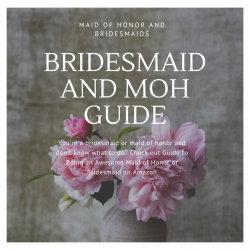Weddings are momentous occasions that often produce a whirlwind of emotions in couples and their loved ones. With so much on the line—the guest experience and the event’s overall success—weddings are big deals for the professionals planning them, too.
Keeping track of all the wedding elements, from the decor to the music to the timing of the ceremony, can overwhelm even the most seasoned wedding planners. It’s even more stressful if you encounter misplaced inventory. With careful planning and adherence to effective inventory organization methods that wedding planners should know, you can avoid inventory missteps and keep things running like clockwork.
Start With a Comprehensive Inventory List
Knowing what you need is the first step in keeping track of your wedding inventory. Manage your inventory by creating a comprehensive list. Such inventory management is important for businesses because it helps you reduce the costs of overstocking or understocking products.
Make a list of the inventory you need to order, categorizing the decor, catering, furniture, and stationery items based on their function, like:
- Centerpieces, floral arrangements, and candles
- Dishes, glasses, serving trays, and cutlery
- Tables, chairs, linens, and cushions
- Place cards, menus, seating charts, and programs
This list can help you order the right amount of what you need and account for it when you store it in your warehouse and pull it out on the big day.
Designate a Dedicated Space for Wedding Inventory
If you store inventory for several events in the same warehouse, designate a specific area for wedding materials. Separating items according to occasion and function makes them easier to track.
Avoid cluttering areas and misplacing items by following practical ways to maximize your warehouse space, such as using vertical space and optimizing aisle widths. With tall shelving units, you can neatly store your wedding inventory higher, away from materials you’ll use for other events.
Pro Tip
Store your wedding items in clear bins and place them on separate shelves. Clear bins allow you to identify what’s inside without opening the box, keeping you from pulling wedding items out and confusing them with other materials.
Double-Check Vendor Deliveries and Pickups
Vendor coordination is a central part of inventory management. If you’re sourcing items like flowers, food, or rented furniture directly from vendors, communicate with them throughout the planning process. Confirm delivery and pickup schedules with them ahead of time to avoid delays and make sure you have the items you need on the wedding day.
Don’t let misplaced inventory ruin the wedding for your clients or yourself. Knowing the best inventory organization methods for wedding planners keeps the wedding on track.
With careful preparation, organization, and communication, you can be confident that every detail is in place for the big day and focus on meeting and even exceeding the couple’s expectations.




